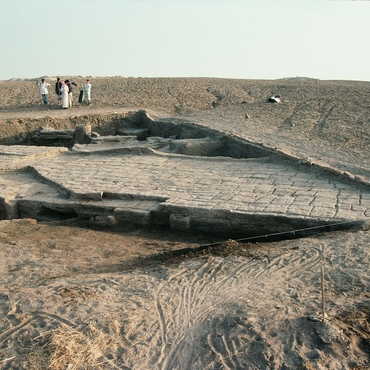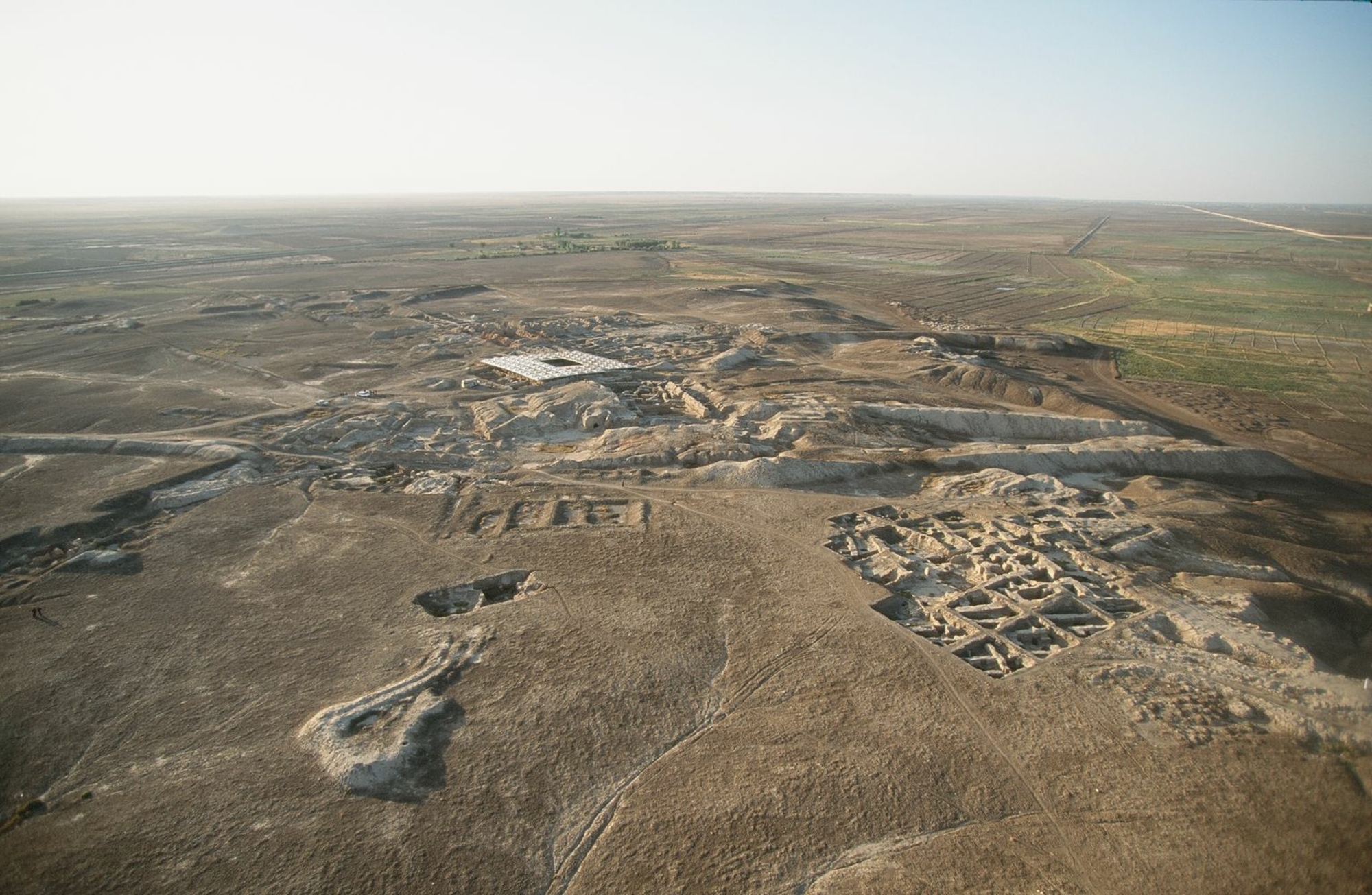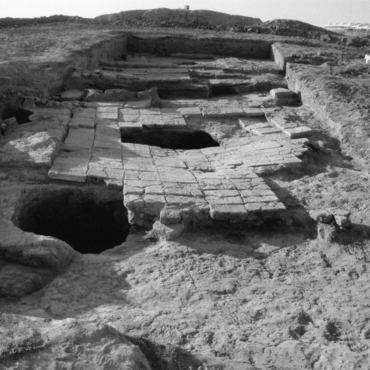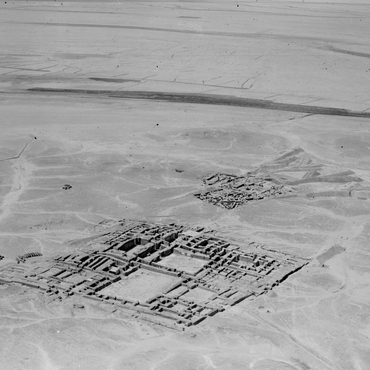
- Home
- Explore the site
- The history of Mari
- City III
The circumstances in which City II was destroyed remain obscure, but we do know it was ravaged in 2300 by a king of Akkad, probably Sargon. It has also been suggested that Naram Sin was responsible for its destruction. He installed his daughters as priestesses in Mari and a governor or shakkanak, a name that came to denote the dynasty that built City III.
Permanence of the urban infrastructure
The general level, hydrological layout, and road network remained essentially the same, as did the compartmentalised infrastructure. The urban enclosure was strengthened and a defensive wall, later transformed into a rampart with an inner talus, was built on top of the original embankment.
Transformation of major monuments
At the centre of the city, some temples disappeared, such as the temple of ”Ninizaza” , while others were rebuilt in new ways. A small terrace was added to the temple of Shamash and a high terrace was associated with a new temple in antis dedicated to the ”Lord of the Land” and destined to replace the great temple-manufacturing area of City II.
It was replaced by the Great Royal Palace (2.5 ha), which has all the regal features characteristic of the 3rd Dynasty of Ur and the Amorite Dynasties, with a throne room based on the morphology of the great Mesopotamian sanctuaries, the king's apartments, and the women’s residence. A temples area, on the other hand, inherited its sacred character from the great sanctuary of City II.
Architectural innovations
A second, smaller palace was built in City III. It still belonged to the king, but its function was to house the royal tombs, which could not be placed, as was the custom, under the throne room because of the sacredness of the great palace: it was impossible for death and the divine to exist in the same place.
Other large residences were built in the city. More ordinary houses have not been found due to the severe erosion of the tell around the palatial ruin after the fire ordered by Hammurabi in 1760.






